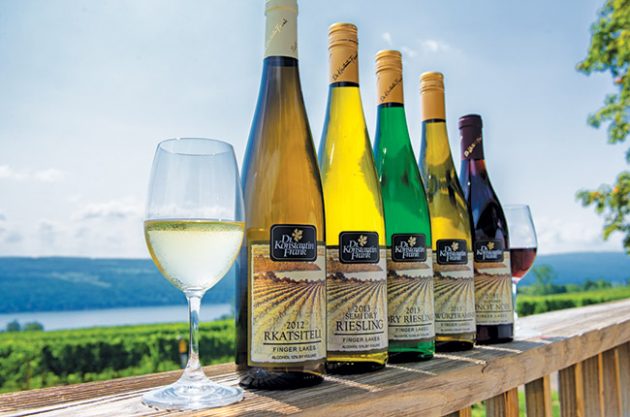Bucolic vistas, activities aplenty and arguably the best Riesling outside Europe are the drawcards of this exciting region. Howard G Goldberg offers the ultimate tour...
Finger Lakes travel guide
If Riesling defines the royalty of white wine, the pastoral Finger Lakes region in New York State approximates toddler Prince George as a successor to the throne. Arguably Germany is Queen, with Austria, Alsace and New York next in line. Australia comes fourth, some say.
As gauged by its 400 licensed producers, New York is the USA’s fourth largest wine state after California, Washington and Oregon. The Finger Lakes area is the state’s largest wine region. Although this sprawling, agriculturally versatile countryside can be visited in all seasons, its pleasures are most fruitful in summer and during the autumn harvest.

Some small folksy hometowns dotting the map evoke America at mid-20th century. Panoramic sites are grandstands for spacious blue skies with lazy clouds and Impressionist sunsets, a serene atmosphere, sweet air, rolling hills, tree-bordered vineyards sloping down to sparkling waters, gorges and waterfalls, quilt-patterned corn, vegetable and berry plantings, fields of flowers, apple and cherry orchards, farmhouses, red barns, silos, dairies and grazing livestock. In autumn, scarlet, orange and gold foliage dazzles the camera.
Glaciers carved the deep freshwater lakes. The three main ones, oriented roughly north-south, are Seneca, Keuka and Cayuga. A fourth, Canandaigua, plays a lesser role in the wine scene.
Seneca, 62km long, is home to 59 of the district’s 128 wineries; Cayuga, slightly shorter, has 30; the Y-shaped Keuka (32km) has 23, and Canandaigua (25km) has 10. The region’s 11 other lakes have six between them.
A proper visit here needs at least three days, but a week can be fully rewarding. Wine travel is orderly and systematic, since the wineries – mostly small-scale and family-owned – are on or near the lakes. Each lake offers organised wine trails but be warned: their informational materials are not exhaustive because not all top producers are members.
Gamut of grapes
The region’s foremost wine-grape-breeding institute (responsible for the varieties Cayuga White, Chardonel, Melody, Noiret and Valvin Muscat) is Cornell University’s New York State Agricultural Experiment Station in Geneva, at Seneca’s northern end.

Cornell University, Ithaca
The state’s so-called vinifera revolution, which enabled Riesling’s ascent to international attention, began in 1976 when the legislature passed the Farm Winery Act. By European standards, 39 years is mere childhood, but the prevalence of young and middle-aged winemakers and grapegrowers bent on building their reputations is accelerating the industry’s maturation.
The legislation helped growers who had eked out livings from such winter-hardy native grapes as Catawba, Concord, Delaware, Diamond and Niagara establish wineries and generate more dollars from wine than fruit sales.
In the transition to mastering vinifera varieties, they planted and bottled appealing cool-climate French hybrid whites such as Vignoles and Seyval Blanc, and reds like Maréchal Foch.
Today there’s the gamut of dry, semi-dry, dessert and sparkling Rieslings, as well as promising whites from Chardonnay, Gewürztraminer and Pinot Gris. Among the reds, Cabernet Franc and Pinot Noir are gaining an encouraging foothold, while Bordeaux-style estate red blends reward exploration.
Single-vineyard Rieslings are proliferating as viticulturists and winemakers identify different terroir expressions; however, because the young region is a work in progress, the wines’ ageability is still hard to establish.
Expect tasting rooms to feature a few wines from the outstanding 2012 vintage but more 2013s – a complicated year. If you can find any luminous 2010s in winery library stocks, snap them up.
Howard G Goldberg, who began writing about wine for The New York Times in 1985, edited The New York Times Book of Wine.
How to get there
Fly direct to Greater Rochester International Airport or via one of New York City’s airports. The drive from Rochester to the Finger Lakes can take 90 minutes to two hours, depending on whether Canandaigua, Keuka, Seneca or Cayuga is the destination. Driving from New York City can take five to six hours.
For more information, visit: www.newyorkwines.org, www.fingerlakes.org, www.fingerlakeswinecountry.com

My perfect day in Finger Lakes

Finger Lakes: where to stay, eat, shop and relax







